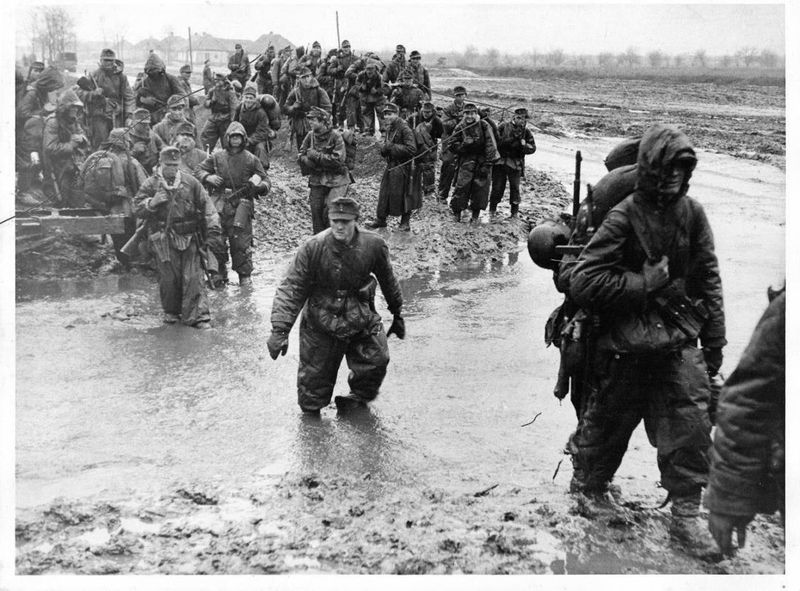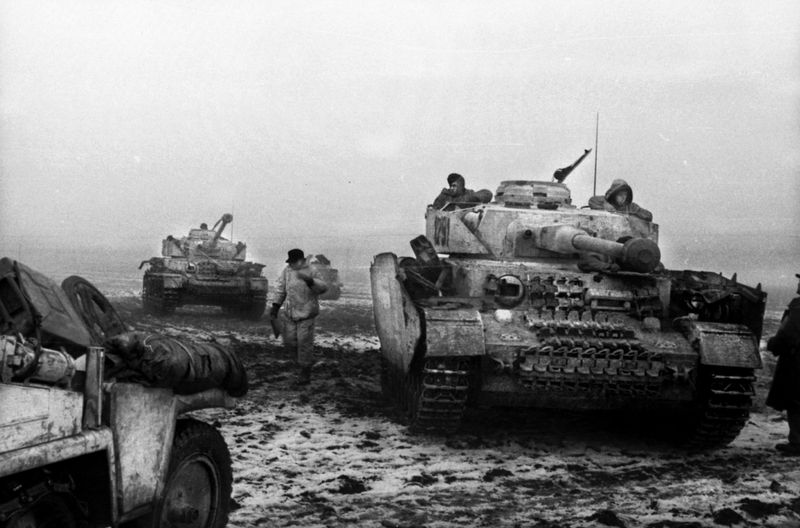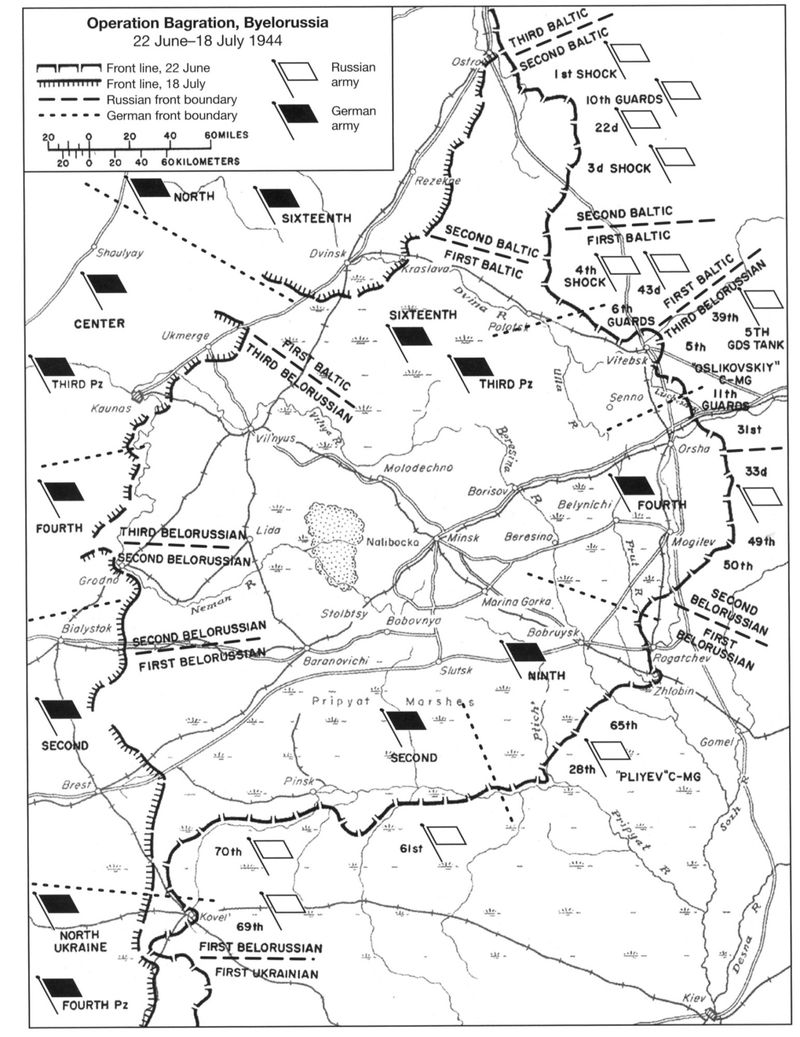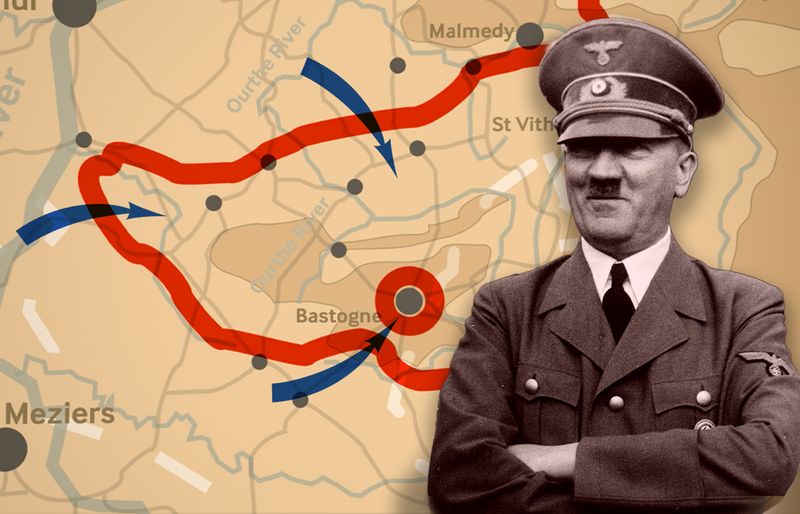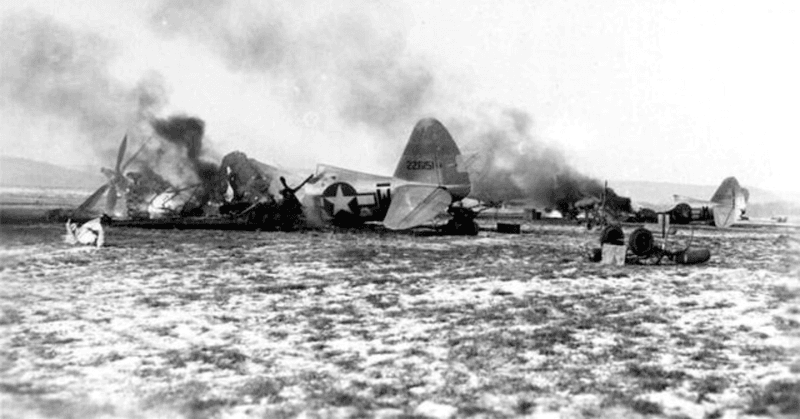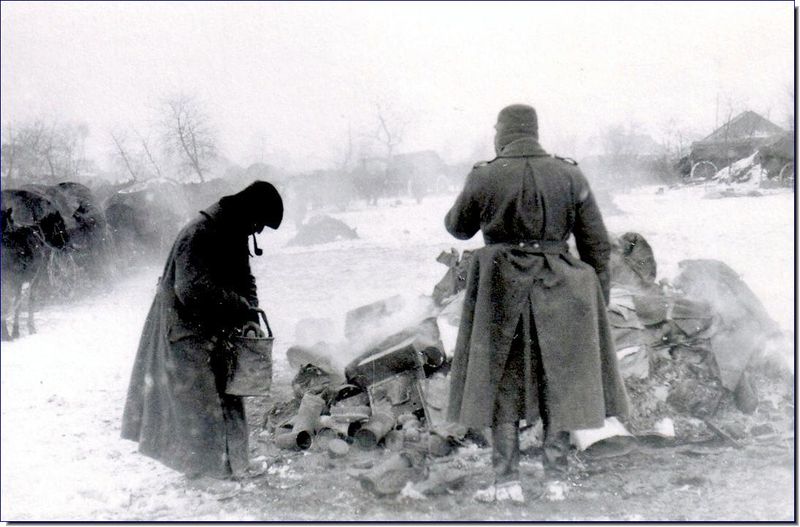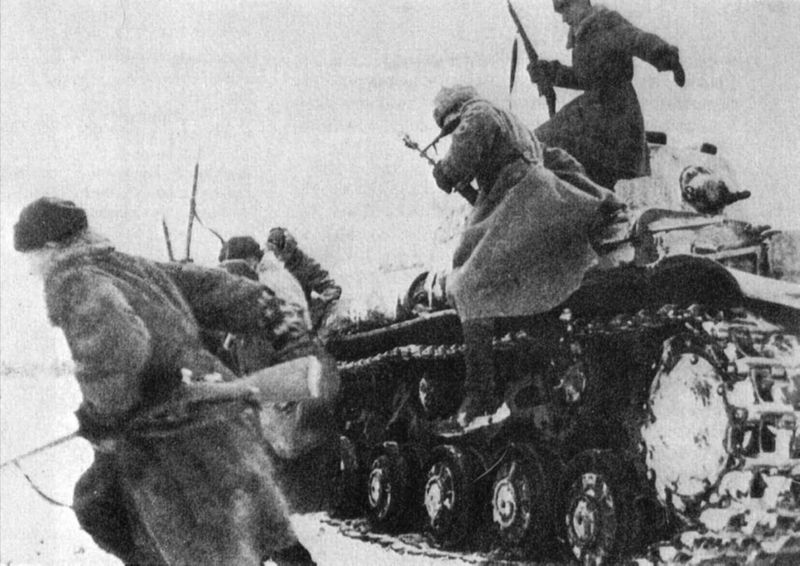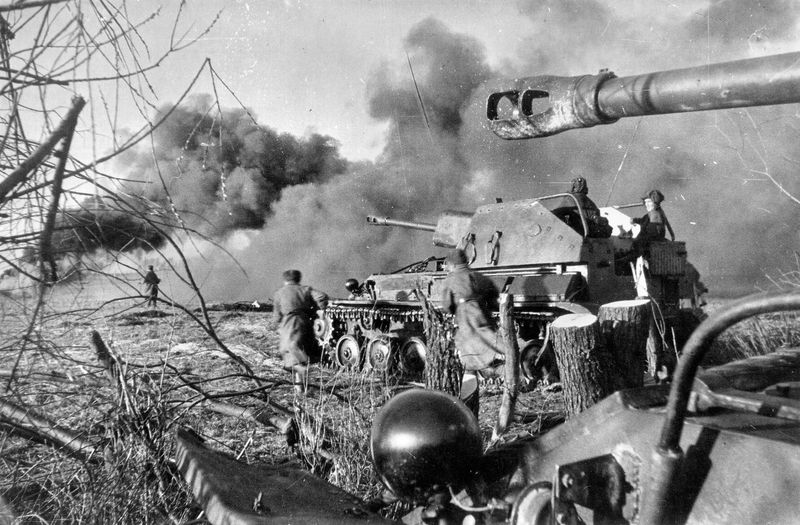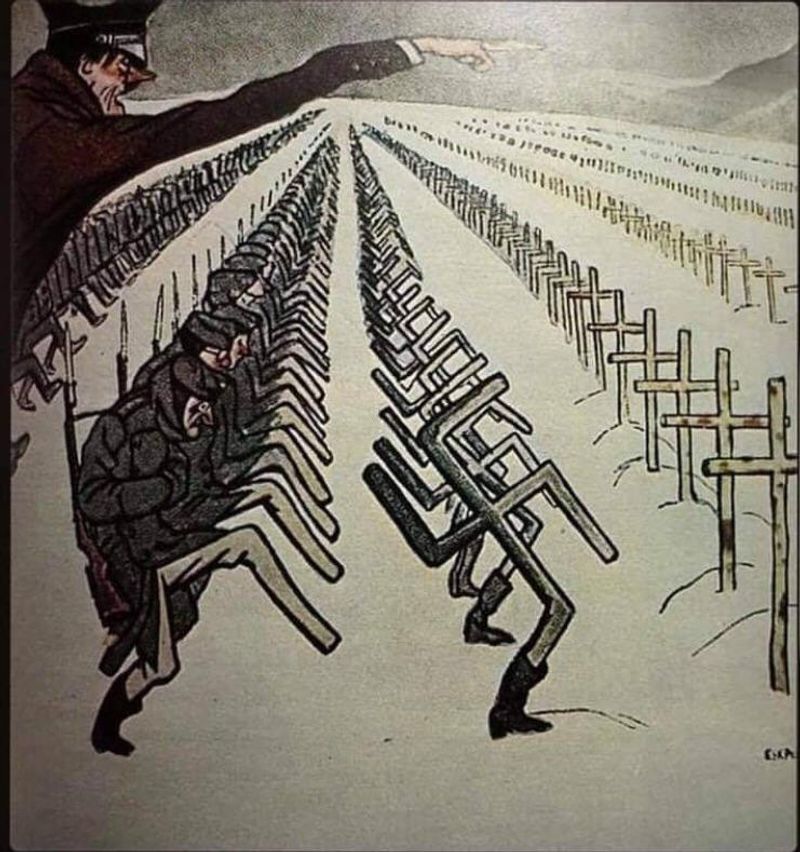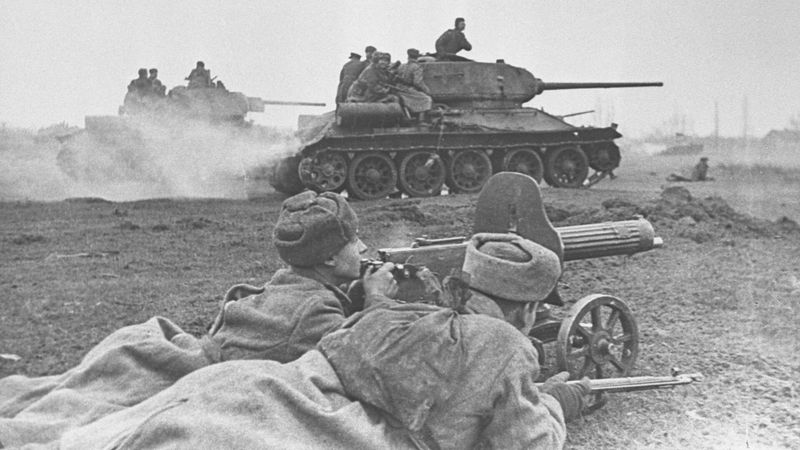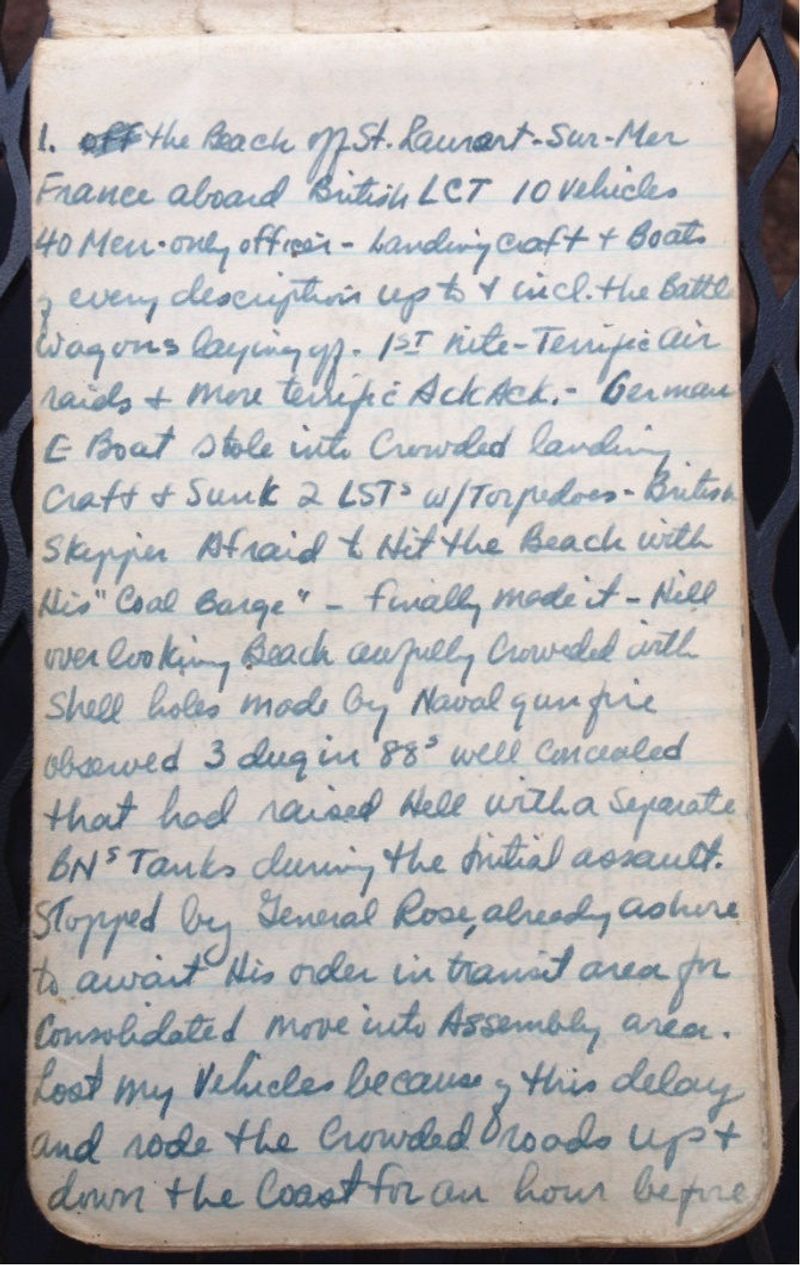In the harsh winter of 1943, a brutal battle unfolded in the snowy fields of eastern Ukraine—a battle that would come to symbolize not just the horrors of war, but the devastating consequences of blind loyalty to a doomed cause. Known as Hell’s Gate, the encirclement at Shanderovka during the Battle of the Korsun–Cherkassy Pocket saw tens of thousands of German troops left to die after Hitler refused to allow a timely retreat. What followed was one of the most gruesome and tragic betrayals of World War II. Here’s how it all unraveled—and why it changed the course of the war forever.
1. A Promised Blitzkrieg Turned Bloody Quagmire
What started as a bold charge into Soviet lands quickly transformed into a nightmare. As 1943 dawned, Hitler’s expansive eastern front buckled under relentless Soviet counterattacks. The initial confidence faded, leaving German forces trapped in an icy quagmire. Hopes of swift victory were replaced by the bitter reality of attrition. The once-proud blitzkrieg, envisioned as an unstoppable force, found itself mired in mud and snow. The soldiers, expecting triumph, faced an unforgiving enemy and an even harsher environment. Caught between orders and survival, they realized the peril of their predicament.
2. Korsun: Hitler’s “Mini-Stalingrad”
Korsun, a seemingly insignificant town, became the focal point of Hitler’s risky gamble. Stationed there were six German divisions, nearly 60,000 men, as the Red Army encroached with terrifying speed. Dubbed “Mini-Stalingrad,” this location saw fierce resistance. The encircled soldiers understood the gravity of their situation, trapped between unforgiving Soviet forces and their leader’s hubris. The name echoed the infamous Stalingrad, drawing parallels of desperation and resolve. As the Soviet noose tightened, hope dwindled. This wasn’t merely a battle for territory but a struggle for survival and dignity.
3. The Soviet Trap Closes at Shanderovka
On January 28, 1944, Soviet forces executed a massive pincer movement, sealing the fate of German troops near Shanderovka. Encircled in a bleak, frozen cauldron, the soldiers confronted starvation, relentless Soviet artillery, and unforgiving terrain. The strategic brilliance of the Soviet plan was evident, as they methodically closed the trap. The encircled Germans, cut off from reinforcements, faced an inevitable fight for survival. The chill in the air mirrored the hopelessness of their predicament. Shanderovka, once just a dot on a map, became synonymous with betrayal and despair.
4. Hitler’s Refusal to Retreat—Again
Despite crystal-clear intelligence indicating the pocket was doomed, Hitler stubbornly refused to authorize a breakout. The echoes of Stalingrad loomed large, yet he remained unmoved, ordering the encircled forces to “hold their ground.” This decision, a death sentence in slow motion, left soldiers questioning their leader’s motives. His refusal wasn’t about strategy but pride and delusion. As the clock ticked, desperation grew. The soldiers’ loyalty was tested to its limits, battling not just an enemy but their commander’s hubris. The tragedy was set, as hope slipped away like sand through fingers.
5. Luftwaffe Resupply Fails Miserably
In a desperate bid to sustain the trapped army, the Luftwaffe undertook resupply missions. However, heavy snow, fierce Soviet anti-aircraft fire, and poor coordination thwarted their efforts. Less than 20% of the essential supplies reached the besieged troops. For every successful drop, there were countless failures, leaving soldiers without food, ammunition, or hope. The skies, meant to be allies, turned into hostile territory, with each mission becoming a perilous gamble. This failure underscored not only logistical challenges but the dire state of German strategic planning at the time.
6. “Hell’s Gate”: The Breakout Begins
Under the cover of darkness on February 16, 1944, German forces launched a desperate breakout at Shanderovka, through a narrow corridor dubbed “Hell’s Gate.” The name was apt, as it became a gauntlet of snow, blood, and fire. Chaos reigned, with soldiers sprinting and stumbling through Soviet lines. The night was illuminated by gunfire and explosions, casting eerie shadows on the snow. Each step was fraught with danger, as survival instincts clashed with fear. Hell’s Gate wasn’t merely a path to freedom but a testament to the human will to endure against the odds.
7. Cavalry vs. Panzers in the Snow
Soviet cavalry units, tanks, and artillery lay in wait along the escape route. The ensuing confrontation was chaotic: burning wagons, fallen horses, and exploding tanks amidst disoriented infantry. The snow, once a silent witness, turned into a canvas of destruction. Soldiers navigated through a kill zone, with every step a dance with death. The clash of traditional cavalry against modern Panzers painted a surreal picture of war’s brutality. Each side, driven by survival and duty, fought with intensity. The frozen battlefield bore witness to the collision of eras and the cost of conflict.
8. “Run or Die”: A Frantic Dash for Freedom
For the frostbitten and starving soldiers, the phrase “Run or Die” was brutally literal. As they sprinted through Soviet lines, survival became a desperate race. Some reached safety; many perished. Survivors recalled climbing over mounds of bodies, each step a grim reminder of what was at stake. The manic dash through enemy fire captured the raw essence of human instinct. It was a harrowing journey through a landscape littered with sacrifice. In those perilous moments, life and death merged into a single, urgent pulse, echoing the heartbeats of those who made it through.
9. Hitler Claimed It a Success—Despite the Carnage
In Berlin, the Nazi propaganda machine spun the breakout as a “glorious maneuver.” However, the reality was a Pyrrhic escape drenched in blood. With 30,000 casualties and a shattered fighting force, the cost was unbearably high. Hitler’s narrative contrasted sharply with the grim truth faced by soldiers who survived. The propaganda sought to mask the pain and loss, yet the echoes of the battle resonated in the hearts of those left behind. The disconnect between Berlin’s rhetoric and battlefield horror highlighted the chasm between ideology and reality, a tragic testament to delusion.
10. A Turning Point on the Eastern Front
The failure at Korsun–Shanderovka marked a pivotal shift on the Eastern Front. It demonstrated the Red Army’s mastery of deep encirclement tactics and highlighted the fatal flaws in Hitler’s obsession with static defense. This turning point underscored the shifting balance of power. The Red Army’s strategic acumen outpaced German rigidity, paving the way for future victories. The Eastern Front, once a theater of German dominance, became a testament to Soviet resilience and innovation. The lessons learned from this battle resonated throughout history, shaping the course of the war and the fate of nations.
11. Betrayed by Command: Voices from the Pocket
Letters and diary entries from the trapped soldiers revealed a tapestry of betrayal, disbelief, and rage. “We were sacrificed,” wrote one survivor, capturing the sense of abandonment that permeated their ranks. The raw emotions etched into these pages spoke of freezing nights, starvation, and pointless bloodshed. These voices, silenced by history’s louder echoes, held the truth of their ordeal. In the quiet moments, away from battle’s chaos, words became their sanctuary, a place to express the unthinkable. These personal accounts serve as poignant reminders of the human cost of war and leadership failure.
12. Hell’s Gate Still Echoes Today
Today, the Ukrainian landscape bears silent witness to the past, dotted with memorials honoring those who perished. Military historians view the battle as a grim lesson in ego, arrogance, and the peril of ignoring battlefield realities. The echoes of Hell’s Gate resonate in the lessons learned and the lives forever altered. This haunting chapter serves as a reminder of the stakes of leadership and the cost of hubris. As the world reflects on these events, the landscape remains a testament to resilience, a solemn tribute to those who faced the unthinkable and emerged changed.

